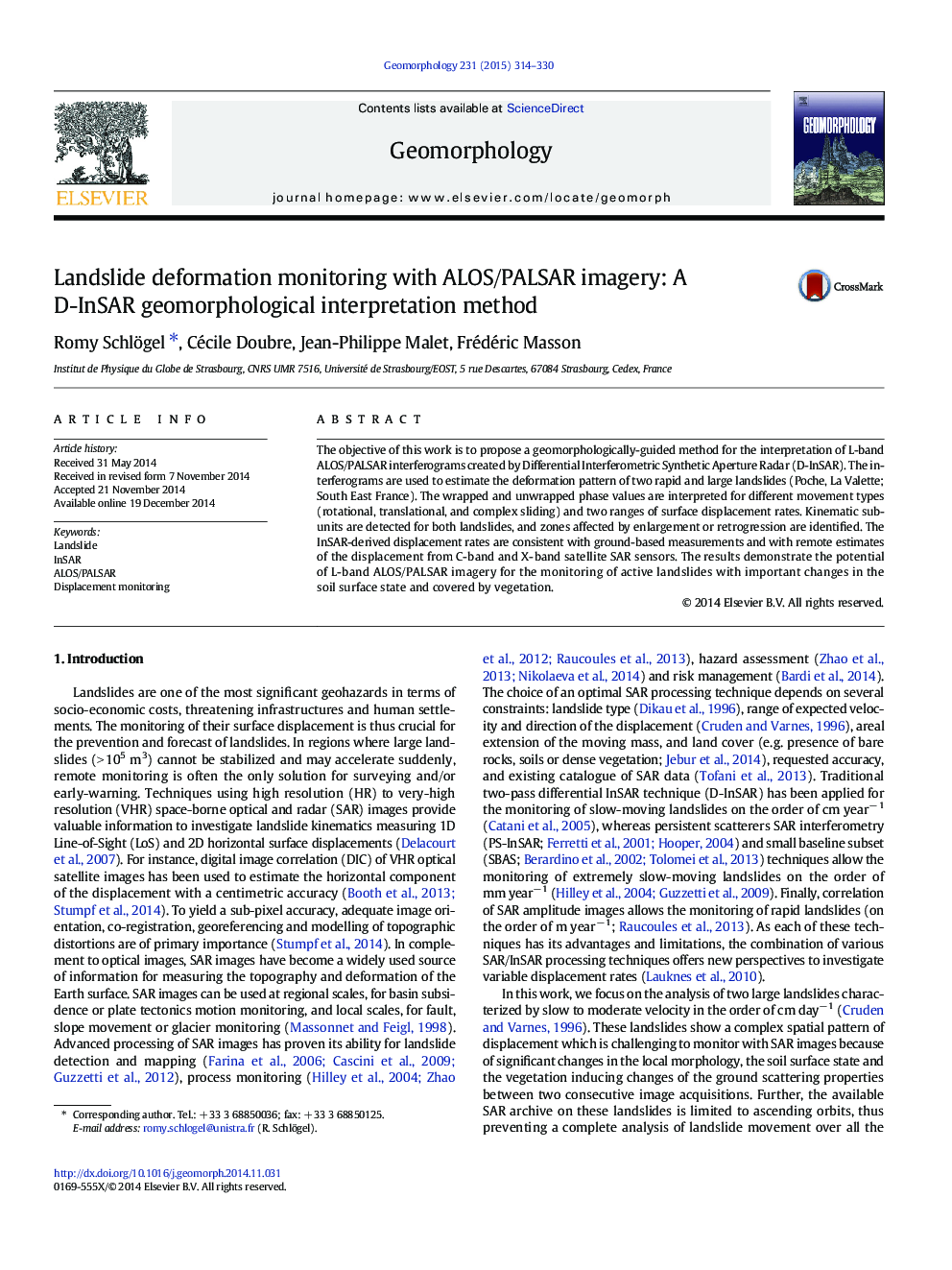| Article ID | Journal | Published Year | Pages | File Type |
|---|---|---|---|---|
| 4684340 | Geomorphology | 2015 | 17 Pages |
•We present a geomorphologically-guided methodology to interpret the SAR phase values for the monitoring of large landslides•We detail SAR images selection, calculation of the interferograms, error correction and interpretation of the phase differences•The interferograms are used to estimate the deformation patterns of two continuously active landslides in South East France•The results demonstrate the potential of ALOS/PALSAR imagery for the monitoring of landslides characterized by large changes
The objective of this work is to propose a geomorphologically-guided method for the interpretation of L-band ALOS/PALSAR interferograms created by Differential Interferometric Synthetic Aperture Radar (D-InSAR). The interferograms are used to estimate the deformation pattern of two rapid and large landslides (Poche, La Valette; South East France). The wrapped and unwrapped phase values are interpreted for different movement types (rotational, translational, and complex sliding) and two ranges of surface displacement rates. Kinematic sub-units are detected for both landslides, and zones affected by enlargement or retrogression are identified. The InSAR-derived displacement rates are consistent with ground-based measurements and with remote estimates of the displacement from C-band and X-band satellite SAR sensors. The results demonstrate the potential of L-band ALOS/PALSAR imagery for the monitoring of active landslides with important changes in the soil surface state and covered by vegetation.
